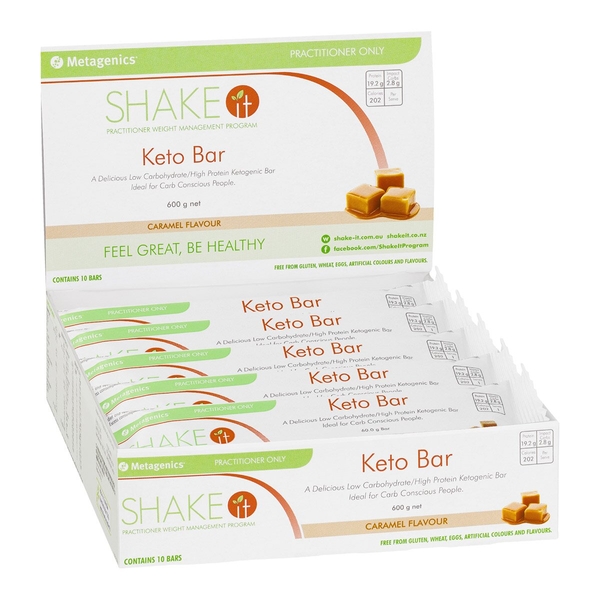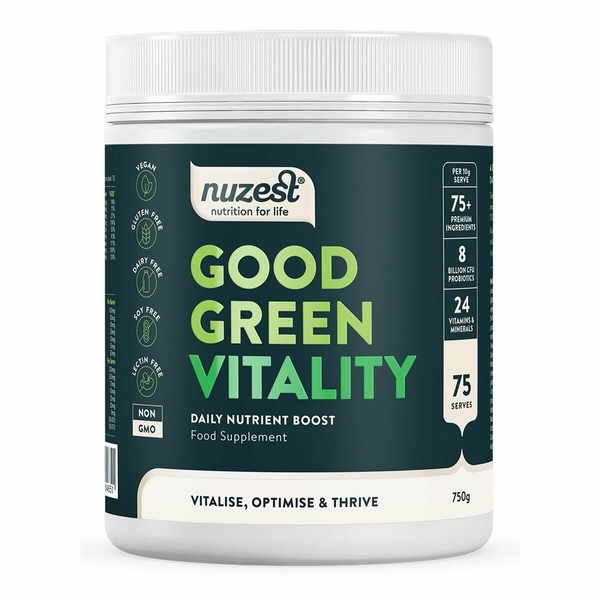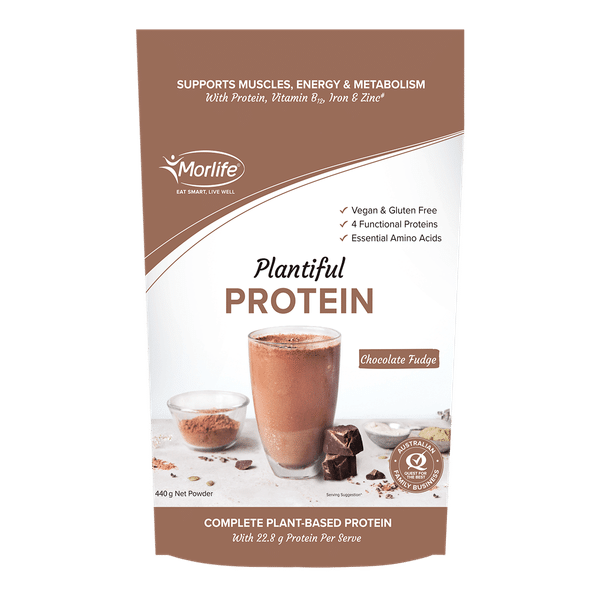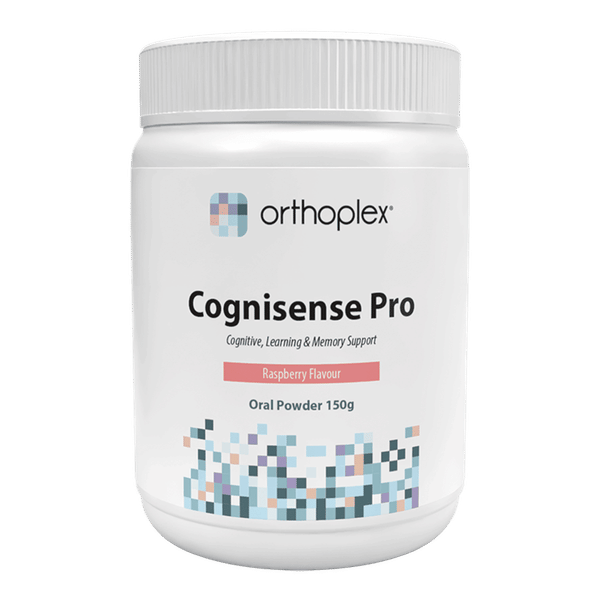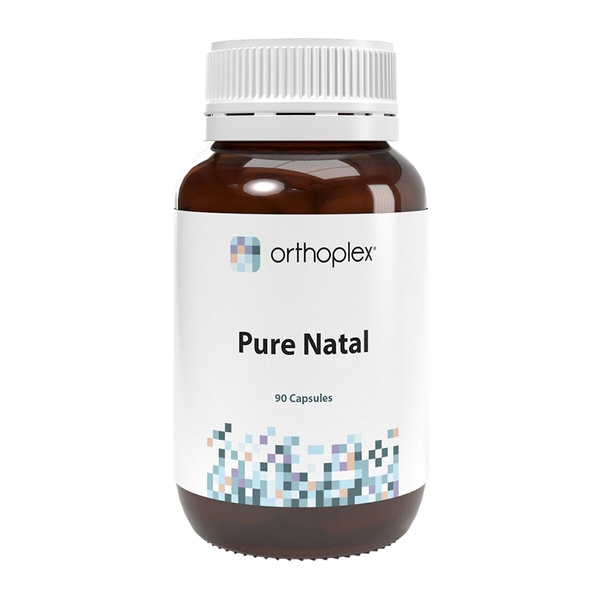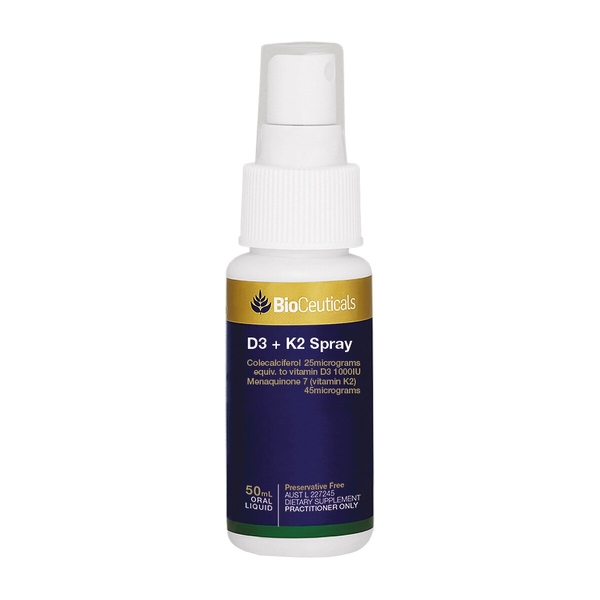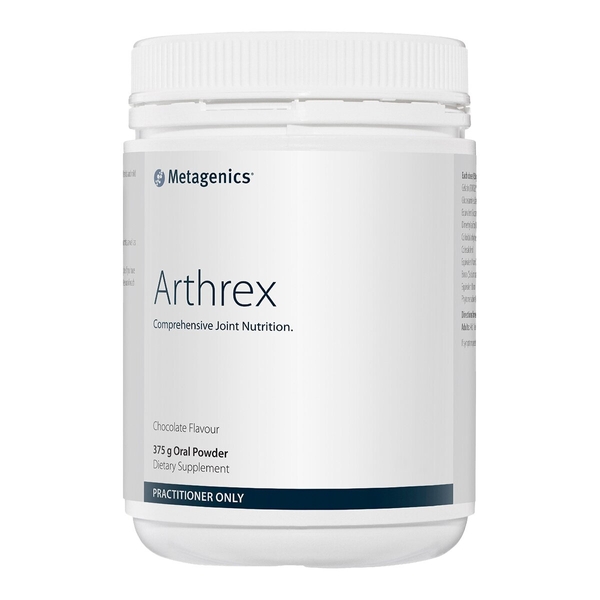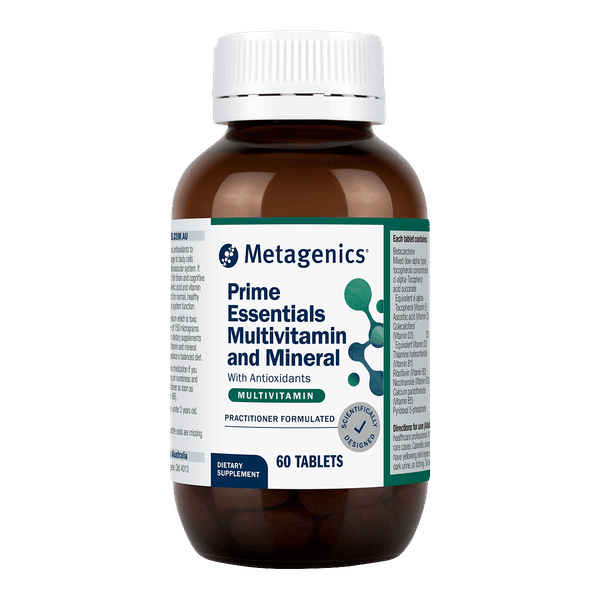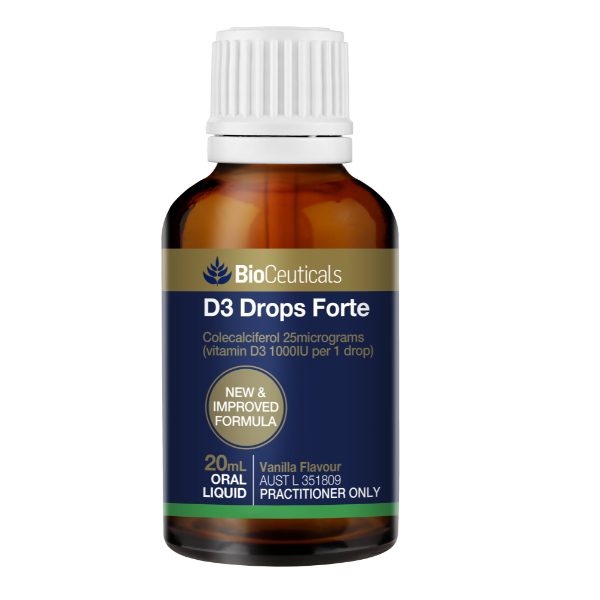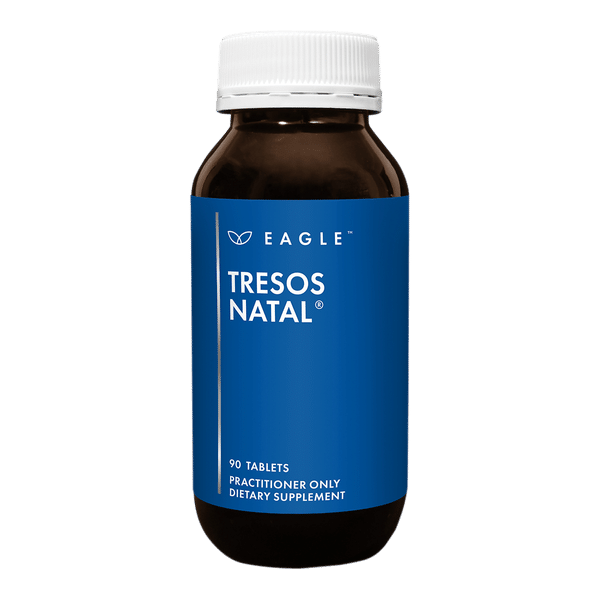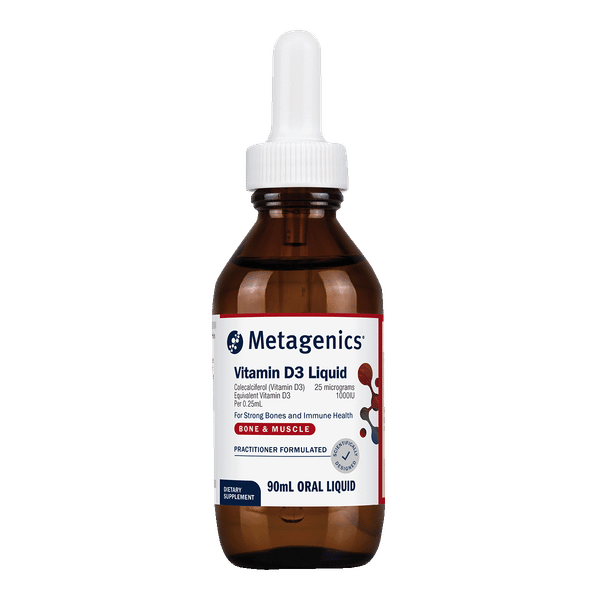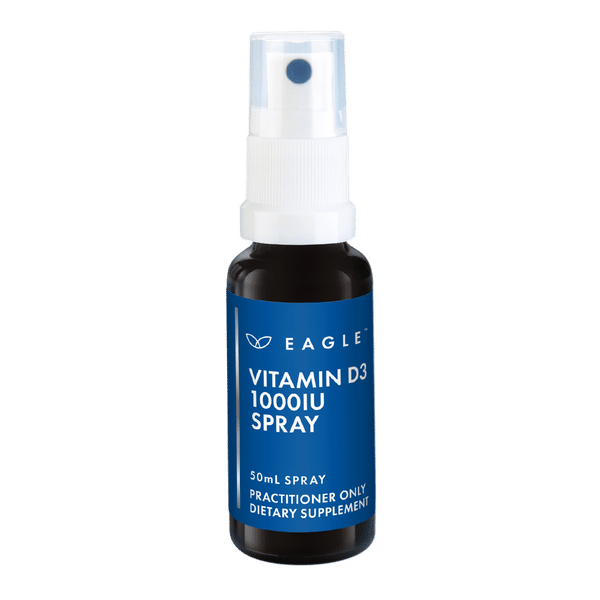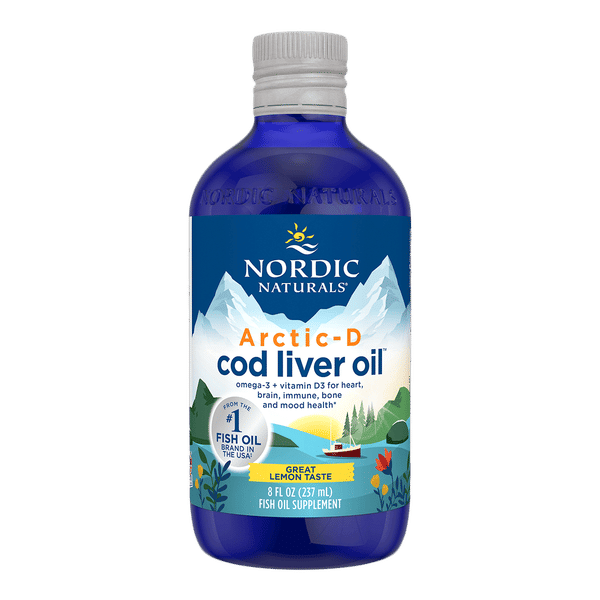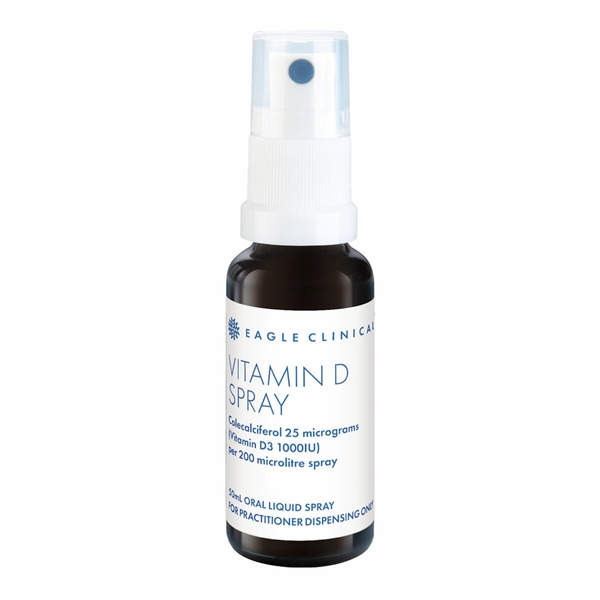
Background
There are different forms of vitamin D, including ergocalciferol (vitamin D2) and cholecalciferol (vitamin D3). Vitamin D is found in fish, eggs, and fortified milk. It's also made in the skin when exposed to sunlight. During periods of sunlight, vitamin D is stored in fat and then released when sunlight is not available.
Vitamin D supplements are commonly used to treat and prevent vitamin D deficiency, for weak and brittle bones, cavities, psoriasis, and hay fever. People also use vitamin D for asthma, cancer, kidney disease, lung disease, infertility and many other conditions, but there's no good scientific evidence to support many of these uses. It is important to maintain healthy levels of vitamin D. This can be done by taking 400-1000 IU of vitamin D daily or spending 15-30 minutes in the sun each day. People who don't get enough sun and people who are 65 years or older are at a higher risk for vitamin D deficiency.
Safety Safety definitions
Special Precautions & Warnings:
Pregnancy and breast-feeding: Vitamin D is likely safe during pregnancy and breast-feeding when used in daily amounts below 4000 IU (100 mcg). Do not use higher doses unless instructed by your healthcare provider. Vitamin D is possibly unsafe when used in higher amounts during pregnancy or while breast-feeding. Using higher doses might cause harm to the infant.Children: Vitamin D is likely safe in children when taken by mouth in recommended amounts. But it is possibly unsafe to take vitamin D in higher doses, long-term. Infants from 0-6 months should not take more than 1000 IU (25 mcg) daily. Infants aged 6-12 months should not take more than 1500 IU (37.5 mcg) daily. Children aged 1-3 years should not take more than 2500 IU (62.5 mcg) daily. Children aged 4-8 years should not take more than 3000 IU (75 mcg) daily. Children aged 9 years and older should not take more than 4000 IU (100 mcg) daily.
Hardening of the arteries (atherosclerosis): Taking vitamin D could make this condition worse, especially in people with kidney disease.
A type of fungal infection called histoplasmosis: Vitamin D might increase calcium levels in people with histoplasmosis. This could lead to kidney stones and other problems. Use vitamin D cautiously.
High levels of calcium in the blood: Taking vitamin D could make this condition worse.
Over-active parathyroid gland (hyperparathyroidism): Vitamin D might increase calcium levels in people with hyperparathyroidism. Use vitamin D cautiously.
Lymphoma: Vitamin D might increase calcium levels in people with lymphoma. This could lead to kidney stones and other problems. Use vitamin D cautiously.
Kidney disease: Vitamin D might increase calcium levels and increase the risk of "hardening of the arteries" in people with serious kidney disease. Calcium levels should be monitored carefully in people with kidney disease.
A disease that causes swelling (inflammation) in body organs, usually the lungs or lymph nodes (sarcoidosis): Vitamin D might increase calcium levels in people with sarcoidosis. This could lead to kidney stones and other problems. Use vitamin D cautiously.
Tuberculosis: Vitamin D might increase calcium levels in people with tuberculosis. This could lead to kidney stones and other problems. Use vitamin D cautiously.
Effectiveness
- A rare, inherited bone disorder marked by low levels of phosphate in the blood (familial hypophosphatemia). Taking specific forms of vitamin D, called calcitriol or dihydrotachysterol, by mouth along with phosphate supplements is effective for treating bone disorders in people with low levels of phosphate in the blood.
- Underactive parathyroid (hypoparathyroidism). Taking specific forms of vitamin D, called dihydrotachysterol, calcitriol, or ergocalciferol, by mouth is effective for increasing calcium blood levels in people with low parathyroid hormone levels.
- Softening of the bones (osteomalacia). Taking vitamin D3 by mouth is effective for treating this condition.
- A bone disorder that occurs in people with kidney disease (renal osteodystrophy). Taking a specific form of vitamin D, called calcitriol, by mouth helps to manage low calcium levels and prevent bone loss in people with kidney failure.
- Rickets. Taking vitamin D by mouth is effective for preventing and treating rickets. A specific form of vitamin D, called calcitriol, should be used in people with kidney failure.
- Vitamin D deficiency. Taking vitamin D by mouth is effective for preventing and treating vitamin D deficiency.
- Bone loss in people taking drugs called corticosteroids. Taking vitamin D by mouth prevents bone loss in people taking drugs called corticosteroids. Also, taking vitamin D alone or with calcium seems to improve bone density in people with existing bone loss caused by using corticosteroids.
- Weak and brittle bones (osteoporosis). Taking vitamin D3 by mouth along with calcium seems to help prevent bone loss and bone breaks in people with osteoporosis.
- Psoriasis. Applying vitamin D in the form of calcitriol, calcipotriene, maxacalcitol, or paricalcitol to the skin can help treat plaque-type psoriasis. Applying vitamin D along with corticosteroids seems to work better than applying vitamin D or corticosteroids alone. But taking vitamin D by mouth doesn't seem to help.
- Hay fever. Taking vitamin D by mouth seems to reduce symptoms of hay fever in adults and children. But it isn't clear if taking vitamin D during pregnancy can help to prevent hay fever in the child after birth.
- Coronavirus disease 2019 (COVID-19). Having low levels of vitamin D may increase the risk of COVID-19. Taking vitamin D by mouth may lower this risk.
- Cavities. Taking vitamin D2 or D3 by mouth reduces the risk of cavities by 36% to 49% in infants, children, and adolescents.
- Heart failure. Taking vitamin D by mouth can help reduce the risk of developing heart failure in some people. But it doesn't seem to help patients who already have heart failure.
- Bone loss in people with overactive parathyroid (hyperparathyroidism-related bone loss). Taking vitamin D3 by mouth seems to reduce parathyroid hormone levels and bone loss in people with a condition called hyperparathyroidism.
- Infection of the airways. Taking vitamin D by mouth helps prevent respiratory infections in children. But taking vitamin D by mouth during pregnancy doesn't seem to reduce the risk of these infections in the child after birth. It also doesn't help prevent infections in adults.
- Preventing tooth loss (tooth retention). Taking calcium and vitamin D3 by mouth appears to prevent tooth loss in elderly people.
- Heart disease. Taking a vitamin D supplement by mouth doesn't seem to prevent heart disease, heart attack, stroke, or other serious heart-related events in most people.
- Critical illness (trauma). Giving vitamin D to people with low vitamin D levels who are in the hospital with a critical illness doesn't make them more likely to live.
- Fractures. Taking vitamin D by mouth doesn't seem to prevent fractures in older people who do NOT have osteoporosis.
- High blood pressure. Taking vitamin D by mouth doesn't seem to lower blood pressure in most people with high blood pressure. But it might help people who have very low blood levels of vitamin D.
- A mental disorder marked by hallucinations and delusion (psychosis). Taking vitamin D by mouth doesn't seem to improve symptoms of psychosis in adults.
- Prostate cancer. Taking vitamin D by mouth doesn't seem to reduce cancer progression or death from prostate cancer.
- Tuberculosis. Most research shows that taking vitamin D by mouth doesn't help to cure tuberculosis or make it less severe.
Dosing & administration
Most people should not consume more than 4000 IU daily unless under the care of a healthcare provider. Speak with a healthcare provider to find out what dose might be best for a specific condition.
Interactions with pharmaceuticals
Aluminum
Interaction Rating=Moderate Be cautious with this combination.
Aluminum is found in most antacids. Vitamin D can increase how much aluminum the body absorbs. This interaction might be a problem for people with kidney disease. Take vitamin D two hours before, or four hours after antacids.
Atorvastatin (Lipitor)
Interaction Rating=Moderate Be cautious with this combination.
Vitamin D might decrease how much atorvastatin the body absorbs. Taking vitamin D with atorvastatin might decrease the effects of atorvastatin.
Calcipotriene (Dovonex)
Interaction Rating=Moderate Be cautious with this combination.
Taking vitamin D along with calcipotriene might increase the effects and side effects of calcipotriene.
Digoxin (Lanoxin)
Interaction Rating=Moderate Be cautious with this combination.
Taking vitamin D along with digoxin might increase the effects and side effects of digoxin. If you are taking digoxin, talk to your doctor before taking vitamin D supplements.
Diltiazem (Cardizem, others)
Interaction Rating=Moderate Be cautious with this combination.
Vitamin D helps your body absorb calcium. Calcium can affect the heart. Diltiazem can also affect the heart. Taking large amounts of vitamin D along with diltiazem might decrease the effects of diltiazem.
Medications changed by the liver (Cytochrome P450 3A4 (CYP3A4) substrates)
Interaction Rating=Minor Be watchful with this combination.
Some medications are changed and broken down by the liver. Vitamin D might change how quickly the liver breaks down these medications. This could change the effects and side effects of these medications.
Verapamil (Calan, others)
Interaction Rating=Moderate Be cautious with this combination.
Vitamin D helps the body absorb calcium. Calcium can affect the heart. Verapamil can also affect the heart. Do not take large amounts of vitamin D if you are taking verapamil.
Water pills (Thiazide diuretics)
Interaction Rating=Moderate Be cautious with this combination.
Vitamin D helps the body absorb calcium. Some "water pills" increase the amount of calcium in the body. Taking large amounts of vitamin D along with some "water pills" might cause too much calcium in the body. This could cause serious side effects, including kidney problems.
Interactions with herbs & supplements
Magnesium: Taking vitamin D can raise the level of magnesium in people who have low magnesium and low vitamin D levels. This doesn't seem to be a concern for people with normal magnesium levels.
Interactions with foods
Products
View all products- Cholecalciferol
- Soy protein isolate
- Whey protein concentrate
- Calcium caseinate
- Maltitol
- Theobroma cacao (Cocoa solids)
- Milk solids powder
- Soy lecithin
- Polyglycerol polyricinoleate (E-476)
- Natural vanilla flavour
- Polydextrose
- Glycerol
- Sorbitol
- Sunflower oil
- Natural flavours
- Thiamine hydrochloride (Vitamin B1)
- Riboflavin (Vitamin B2)
- Pyridoxine hydrochloride (Vitamin B6)
- Ascorbic acid (Vitamin C)
- d-alpha-Tocopheryl acid succinate
- Nicotinamide (Vitamin B3)
- Calcium pantothenate (Vitamin B5)
- Calcium hydrogen phosphate
- Ferrous fumarate
- Zinc bisglycinate (Zinc amino acid chelate)
- Chromium nicotinate
- Copper gluconate
- Manganese amino acid chelate
- Potassium iodide
- Biotin
- Theobroma cacao (Cocoa powder)
- Tocopherols concentrate - mixed (Vitamin E)
- Acacia sp. (fibre)
- Stevia rebaubiana
- Cholecalciferol
- Pea protein isolate 8.3 g
- Lactobacillus acidophilus 1.58 billion CFU
- Bifidobacterium bifidum 1.58 billion CFU
- Marine algae 500 mg
- Linum usitatissimum (seed) (Flaxseed) 250 mg
- Sunflower lecithin 200 mg
- Spinacia oleracea (Spinach) 100 mg
- Beta vulgaris (root) powder (Beetroot) 100 mg
- Daucus carota powder (Carrot) 100 mg
- Arthrospira platensis (Spirulina) 100 mg
- Wheatgrass powder 100 mg
- Zingiber officinale powder 40 mg
- Ribes nigrum powder 200 mg
- Vitis vinifera powder 200 mg
- Malpighia glabra powder 100 mg
- Lycium chinese powder 100 mg
- Vaccinium myrtillus powder 100 mg
- Bacopa monnieri powder 50 mg
- Taraxacum officinale powder 30 mg
- Malus (fibre) powder (Apple) 587 g
- Apple pectin 200 mg
- Plantago ovata (husk) (Psyllium) 100 mg
- Citric acid anhydrous 150 mg
- Citrus bioflavonoids extract 70 mg
- Ananas comosus (Bromelain) 30 mg
- R,S-alpha lipoic acid 20 mg
- Beta glucan 11.5 mg
- Dunaliella salina 8 mg
- Lutein 2 mg
- Zeaxanthin (Carotenoids) 400 µg
- Natural chocolate flavour
- Potassium phosphate dibasic
- Calcium citrate
- Ascorbic acid (Vitamin C)
- Zinc gluconate
- d-alpha-Tocopheryl acid succinate (Vitamin E)
- Thaumatin
- Nicotinamide (Vitamin B3)
- Manganese gluconate
- D-calcium pantothenate (Vitamin B5)
- Tocopherols concentrate - mixed (Vitamin E)
- Selenomethionine
- Retinyl palmitate
- Riboflavin (Vitamin B2)
- Thiamine hydrochloride (Vitamin B1)
- Pyridoxine hydrochloride (Vitamin B6)
- Folate
- Chromium picolinate
- Fucus vesiculosus powder 97 mg
- Stevia rebaubiana powder
- Phytomenadione (Vitamin K1)
- Copper gluconate
- Calendula officinalis powder
- Biotin
- Cyanocobalamin (Vitamin B12)
- Theobroma cacao powder 2.1 g
- Brassica oleracea var. italica powder 100 mg
- Carica papaya 50 mg
- Hordeum vulgare 100 mg
- Natural vanilla flavour
- Magnesium gluconate
- Menaquinone 7 (Vitamin K2)
- Cholecalciferol
- Pea protein isolate
- Malus (Apple)
- Apple pectin
- Arthrospira platensis (Spirulina)
- Linum usitatissimum (seed) (Flaxseed)
- Sunflower lecithin
- Marine algae
- Wheatgrass powder
- Beta vulgaris (root) powder (Beetroot)
- Brassica oleracea var. italica (Broccoli)
- Chlorella pyrenoidosa powder
- Spinacia oleracea (Spinach)
- Daucus carota powder (Carrot)
- Zingiber officinale
- Glycyrrhiza glabra (root)
- Cynara scolymus
- Ribes nigrum
- Vitis vinifera
- Malpighia glabra
- Vaccinium myrtillus
- Camellia sinensis
- Rosa canina
- Centella asiatica
- Silybum marianum
- Rhodiola rosea
- Rosmarinus officinalis
- Withania somnifera
- Taraxacum officinale
- Lycium chinese (berry)
- Citric acid anhydrous
- Citrus bioflavonoids extract
- R,S-alpha lipoic acid
- Beta glucan
- Ubiquinol-10 (Coenzyme Q10)
- Dunaliella salina
- Lactobacillus acidophilus
- Bifidobacterium bifidum
- Potassium phosphate dibasic
- Magnesium citrate
- Ascorbic acid (Vitamin C)
- Natural vanilla flavour
- Natural pineapple flavour
- Zinc citrate
- Tocopherols concentrate - mixed (Vitamin E)
- Selenomethionine
- D-calcium pantothenate (Vitamin B5)
- Nicotinamide (Vitamin B3)
- Pyridoxine hydrochloride (Vitamin B6)
- Retinyl palmitate
- Copper gluconate
- Thiamine hydrochloride (Vitamin B1)
- Riboflavin (Vitamin B2)
- Folate
- Chromium picolinate
- Panax ginseng
- Fucus vesiculosus
- Stevia rebaubiana (leaf)
- Phytomenadione (Vitamin K1)
- Biotin
- Cyanocobalamin (Vitamin B12)
- Lentinula edodes (fruiting body)
- Ulmus rubra (bark inner) powder
- Hordeum vulgare
- Plantago ovata (husk) (Psyllium)
- Theobroma cacao
- Tocopherols concentrate - mixed (Vitamin E)
- Astragalus membranaceus
- Manganese gluconate
- Menaquinone 7 (Vitamin K2)
- Fallopia japonica
- Amylase enzyme
- Protease
- Lipase
- Cellulase
- Lactase
- Euterpe oleracea (berry) ext. (Acai)
- Bacopa monnieri
- Salvia officinalis
- Vaccinium macrocarpon
- Vitamin D
- Oryza sativa (Brown rice)
- Vicia faba (Fava bean protein)
- Pumpkin seed protein
- Cannabis sativa (seed)
- L-glutamine
- Acacia sp. (fibre)
- L-glycine
- L-valine
- L-threonine
- L-leucine
- L-arginine
- L-isoleucine
- Theobroma cacao (Cocoa powder) 3.24 g
- Natural flavours
- Malus (powder) (Apple)
- Siraitia grosvenorii (Monk fruit)
- Medium Chain Triglycerides (powder) (MCT)
- Xanthan gum
- Eleutherococcus senticosus
- Coffea canephora
- Camellia sinensis
- Magnesium citrate
- Zinc gluconate
- Ferrous fumarate
- Pink Himalayan crystal salt
- Laminaria digitara (Kelp)
- Ananas comosus (Bromelain)
- Carica papaya (Papain)
- Cyanocobalamin (Vitamin B12)
- Cholecalciferol (Vitamin D3) 24.6 μg equiv. vitamin D 1000 IU
- Acetyl levocarnitine hydrochloride (Acetyl-L-carnitine) 250 mg
- Inositol 500 mg
- Choline bitartrate 350 mg equiv. choline 144 mg
- Pinus radiata ext. 50 mg
- Glycine 2 g
- Taurine 500 mg
- Calcium citrate 415 mg equiv. calcium 100 mg
- Potassium citrate 207 mg equiv. potassium 75 mg
- Magnesium citrate 842 mg equiv. magnesium 130 mg
- Zinc citrate dihydrate 31 mg equiv. zinc 10 mg
- Molybdenum trioxide 33 μg equiv. molybdenum 22.2 μg
- Selenomethionine 74.4 μg equiv. selenium 30 μg
- Pyridoxal 5-phosphate monohydrate (P5P) 15.7 mg equiv. pyridoxine 10 mg
- Nicotinamide (Vitamin B3) 15 mg
- Menaquinone 7 (Vitamin K2) 34.8 μg
- Hydroxocobalamin (Vitamin B12) 200 μg
- Calcium pantothenate (Vitamin B5) 20 mg equiv. pantothenic acid 18.3 mg
- Calcium folinate (Activated folate) 217 μg equiv. folinic acid 200 μg
- Retinol acetate (Vitamin A) 461 μg equiv. vitamin A 400 μgRE equiv. vitamin A 1335 IU
- Riboflavin 5-phosphate sodium (Activated B2) 6.54 mg equiv. riboflavin 4.98 mg
- Lecithin 100 mg equiv. phosphatidylcholine 20 mg
- Punica granatum ext. 8.04 mg
- Vaccinium myrtillus ext. 2.5 mg
- Thiamine hydrochloride (Vitamin B1) 12.7 mg equiv. thiamine 10 mg
- Cholecalciferol (Vitamin D3) 25 μg equiv. vitamin D 1000 IU
- Levomefolate calcium (Activated folate) 541 μg equiv. levomefolic acid 500 μg
- Mecobalamin (Vitamin B12) 400 μg
- Potassium iodide 353.17 μg equiv. iodine 270 μg
- Zinc citrate dihydrate 38.34 mg equiv. zinc 12.3 mg
- Iron bisglycinate 35.4 mg equiv. iron 8 mg
- Beta-carotene carotenoids (Vitamin A) 3 mg
- Thiamine nitrate (Vitamin B1) 30 mg equiv. thiamine 24.32 mg
- Riboflavin 5-phosphate sodium (Activated B2) 20.8 mg equiv. riboflavin 15.2 mg
- Nicotinamide (Vitamin B3) 35 mg
- Calcium pantothenate (Vitamin B5) 40 mg equiv. pantothenic acid 36.64 mg
- Pyridoxine hydrochloride (Vitamin B6) 30 mg equiv. pyridoxine 24.68 mg
- Pyridoxal 5-phosphate (P5P) 11.8 mg equiv. pyridoxine 7.53 mg
- Biotin 300 μg
- Choline bitartrate 100 mg
- Inositol 50 mg
- Chromium nicotinate 200 μg equiv. chromium 25 μg
- Chromium picolinate 200 μg equiv. chromium 25 μg
- Phytomenadione (Vitamin K1) 70 μg
- Manganese amino acid chelate 10 mg equiv. manganese 1 mg
- Selenomethionine 150 μg equiv. selenium 60 μg
- Menaquinone 7 (Vitamin K2) 20 μg
- Magnesium ascorbate monohydrate (Vitamin C) 169.24 mg equiv. ascorbic acid 151 mg equiv. magnesium 10.48 mg
- Calcium ascorbate dihydrate (Vitamin C) 182.59 mg equiv. ascorbic acid 150 mg equiv. calcium 17.16 mg
- Molybdenum trioxide 75 μg equiv. molybdenum 50 μg
- Cholecalciferol 25 μg equiv. vitamin D3 1000 IU
- Riboflavin 5-phosphate sodium (Activated B2) 63.53 mg equiv. riboflavin 50 mg
- Pyridoxal 5-phosphate monohydrate (P5P) 15.67 mg equiv. pyridoxine 10 mg
- Calcium folinate (Activated folate) 508.4 μg equiv. folinic acid 400 μg
- Ubidecarenone (Coenzyme Q10) 30 mg
- Thiamine nitrate (Vitamin B1) 61.68 mg equiv. thiamine 50 mg
- Nicotinamide (Vitamin B3) 90 mg
- Nicotinic acid (Vitamin B3) 10 mg
- Calcium pantothenate (Vitamin B5) 49.12 mg equiv. pantothenic acid 45 mg
- Cyanocobalamin (Vitamin B12) 400 μg
- Retinyl palmitate 824.67 μg equiv. vitamin A 450 μgRE
- Biotin 300 μg
- Pyridoxine hydrochloride (Vitamin B6) 48.62 mg equiv. pyridoxine 40 mg
- d-alpha-Tocopheryl acetate 18.38 mg equiv. vitamin E 25 IU
- Cholecalciferol 25 μg equiv. vitamin D3 1000 IU
- Glucosamine sulphate potassium chloride 2 g equiv. glucosamine sulphate 1.5 g equiv. potassium chloride 491.8 mg
- Bovine collagen peptides (Gelatin) 10 g
- Silica - colloidal anhydrous 40 mg
- Borax 26 mg equiv. boron 3 mg
- Phytomenadione (Vitamin K1) 70 μg
- Dimethyl sulfone (MSM) 1.5 g
- Cholecalciferol 25 μg equiv. vitamin D3 1000 IU
- Tocopherols concentrate - mixed (low-alpha type) 12 mg
- d-alpha-Tocopheryl acid succinate 123 mg equiv. vitamin E 149 IU
- Ascorbic acid (Vitamin C) 100 mg
- Co-methylcobalamin (Vitamin B12) 400 μg
- Zinc bisglycinate (Zinc amino acid chelate) 50 mg equiv. zinc 10 mg
- Vitis vinifera ext. 158 mg
- Camellia sinensis ext. 120 mg
- Beta-carotene carotenoids (Vitamin A) 6 mg
- Thiamine hydrochloride (Vitamin B1) 50 mg
- Riboflavin (Vitamin B2) 20 mg
- Nicotinamide (Vitamin B3) 100 mg
- Calcium pantothenate (Vitamin B5) 50 mg
- Pyridoxal 5-phosphate (P5P) 5 mg
- Pyridoxine hydrochloride (Vitamin B6) 30 mg
- Calcium folinate (Activated folate) 433 μg equiv. folinic acid 400 μg
- Biotin 50 μg
- Borax 26 mg equiv. boron 3 mg
- Manganese amino acid chelate 16 mg equiv. manganese 2.5 mg
- Chromic chloride 769 μg equiv. chromium 150 μg
- Molybdenum trioxide 188 μg equiv. molybdenum 125 μg
- Selenomethionine 188 μg equiv. selenium 75 μg
- Potassium iodide 131 μg equiv. iodine 100 μg
- Cholecalciferol 25 μg equiv. vitamin D3 1000 IU
- Pyridoxine hydrochloride (Vitamin B6) 40 mg equiv. pyridoxine 32.91 mg
- Mecobalamin (Vitamin B12) 500 μg
- Calcium folinate (Activated folate) 347 μg equiv. folinic acid 250 μg
- Levomefolate calcium (Activated folate) 270 μg equiv. levomefolic acid 250 μg
- Selenomethionine 124 μg equiv. selenium 50 μg
- Thiamine hydrochloride (Vitamin B1) 30 mg equiv. thiamine 26.7 mg
- Riboflavin (Vitamin B2) 30 mg
- Nicotinamide (Vitamin B3) 30 mg
- Nicotinic acid (Vitamin B3) 5 mg
- Pyridoxal 5-phosphate monohydrate (P5P) 10 mg equiv. pyridoxine 6.38 mg
- Choline bitartrate 300 mg equiv. choline 125 mg
- Inositol 40 mg
- Biotin 400 μg
- Ascorbic acid (Vitamin C) 50 mg
- Phytomenadione (Vitamin K1) 100 μg
- Borax 2.2 mg equiv. boron 249 μg
- Chromium nicotinate 404 μg equiv. chromium 50 μg
- Calcium citrate tetrahydrate 237 mg equiv. calcium 50 mg
- Iron amino acid chelate 37.5 mg equiv. iron 7.5 mg
- Magnesium amino acid chelate 100 mg equiv. magnesium 20 mg
- Manganese amino acid chelate 10 mg equiv. manganese 2 mg
- Molybdenum trioxide 75 μg equiv. molybdenum 50 μg
- Potassium iodide (Iodine) 353 μg equiv. iodine 270 μg equiv. potassium 83 μg
- Zinc amino acid chelate 75 mg equiv. zinc 15 mg
- Calcium pantothenate (Vitamin B5) 30 mg equiv. pantothenic acid 27.48 mg equiv. calcium 2.52 mg

